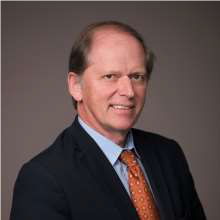“Hiroshima is a city which has achieved remarkable reconstruction after war, from burned fields to a major city within western Japan. Hiroshima has a wealth of knowledge on the process of post war urban reconstruction and growth.”
Fumio Kishida, Prime Minister, Japan
Rising from the ashes of World War II, the city of Hiroshima has transformed into an inspiring symbol of hope, peace, and regeneration. As cities worldwide grapple with the aftermath of natural hazards, conflict, and economic turmoil, Hiroshima's remarkable journey offers invaluable lessons in urban restoration and resilience.
Hiroshima's Transformation: Reconciliation and Healing
Once devastated, Hiroshima has risen to become an important economic hub in Japan's Chugoku region. This city on the Seto Inland Sea exemplifies urban restoration beyond mere concrete and steel – it tells a stirring story of reconciliation and healing, offering lessons to share with the world.
From Recovery to Growth: The Hiroshima Symposium
The Tokyo Development Learning Center (TDLC) and Hiroshima City recently hosted an international symposium, "From Recovery to Growth: Learning from Hiroshima’s Experience," which brought together global leaders, civil society representatives, and World Bank officials to discuss strategies for addressing urban crises faced by cities in the Europe and Central Asia region. Co-convened by the World Bank and the Government of Japan, the event focused on Hiroshima's journey from a war-devastated city to a modern, resilient, and livable urban center. Attendees explored the restoration of critical infrastructure and services, as well as short-term versus long-term solutions for recovery.
At the symposium, Anna Yurchenko, Ukraine's Deputy Minister of Communities, Territories, and Infrastructure Development, shared her perspective on the importance of Hiroshima's lessons for her home country. She urged the international community to support emergency repairs in Ukraine, a nation deeply affected by Russia's invasion more than a year ago.
Building Greener, More Resilient Cities
Juergen Voegele, Vice President for Sustainable Development at the World Bank, emphasized the potential of cities to adapt and rebuild in the face of adversity. He highlighted the importance of green infrastructure, low-carbon transportation, and energy-efficient buildings in promoting sustainability. Additionally, he stressed the value of investments in disaster risk reduction and preparedness, which can protect vulnerable communities and ensure access to essential services.

